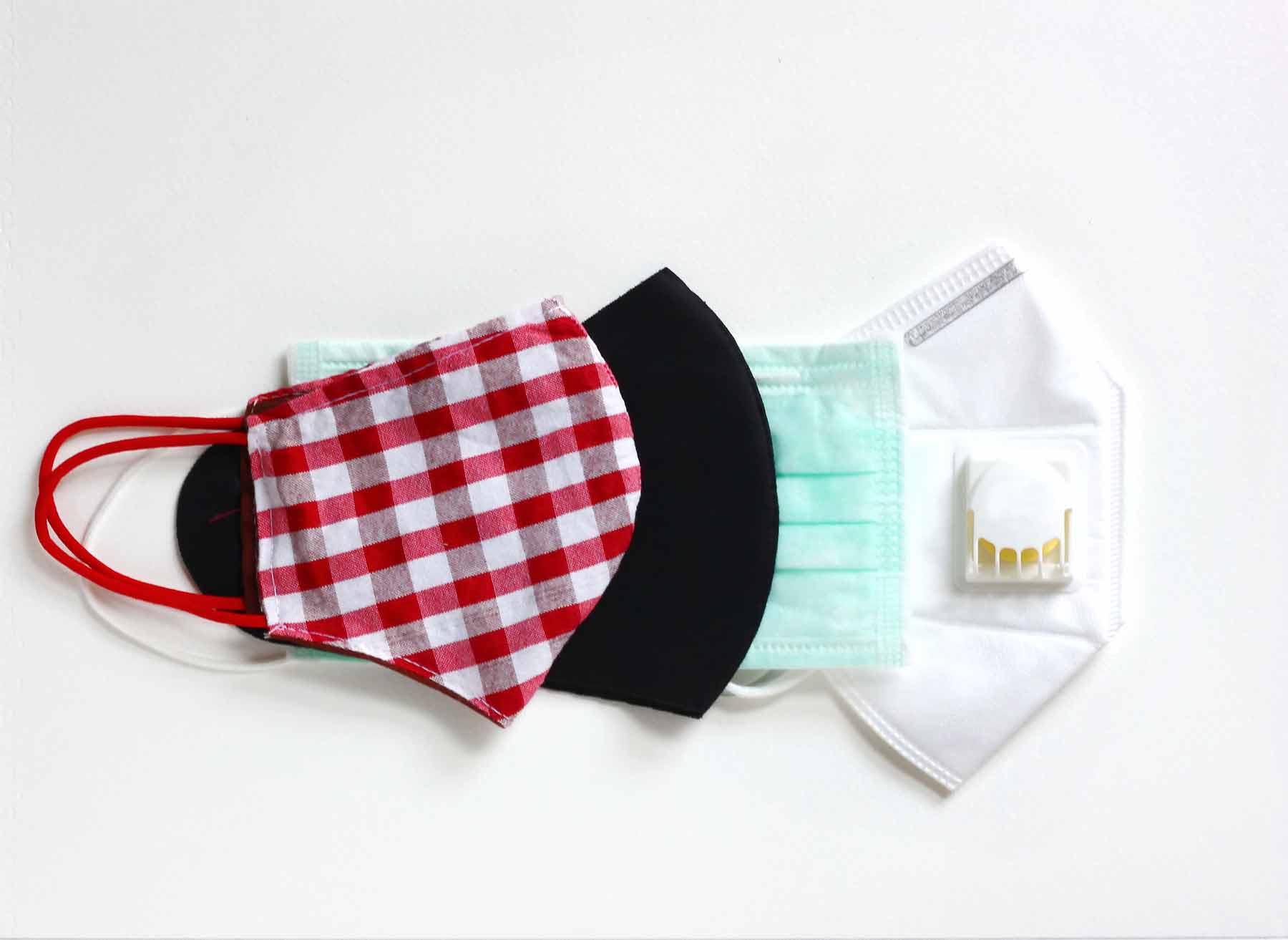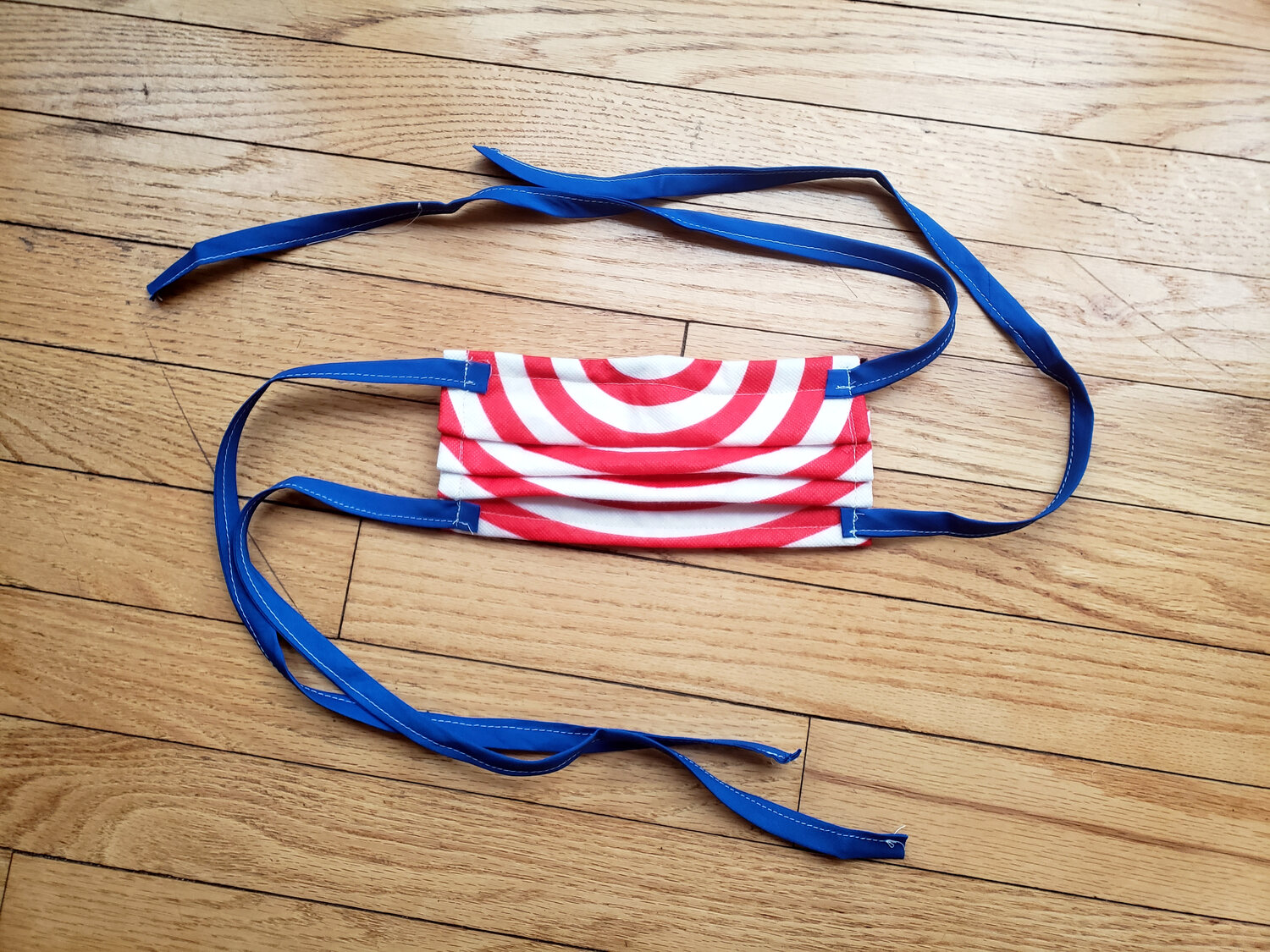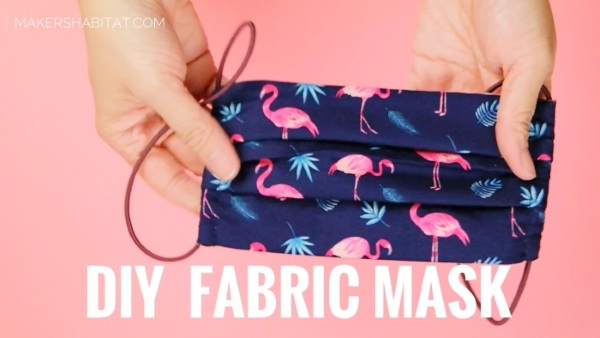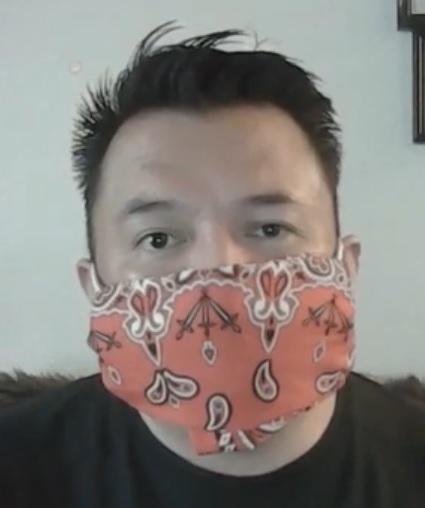The Center for Disease Control notes that fabric masks are a crisis response option when other supplies are not available. N95 masks are in short supply, and these are the masks that are most needed by healthcare workers. Surgical masks can serve lighter-duty uses. Fabric masks can be used in healthcare settings to cover N95s, and they are also recommended for the general public.
Face Masks
Information on how to make face masks
Why would we want to make face masks?
What considerations should I have in mind when getting started with making a face mask?
The Centers for Disease Control and Prevention recommends that Americans use basic “nonmedical, cloth” masks. Medical masks should be reserved for health care workers. See this FAQ for more information on cloth masks for nonmedical use.
Masks are NOT a substitute for social distancing.
OSCMS has provided the following valuable resources for home sewists interested in making and/or organizing local efforts to distribute sewn face mask:
“I want to make masks! How can I Help?”: A guide for home sewists
Fabric masks provide different levels of filtration depending on the materials used.
If you are producing for clinicians, it is best to ensure your local hospitals and local clinicians will accept the mask design you are considering as every hospital/clinician will have their own guidelines.
Almost any breathable design that fits over a respirator and can be worn securely can be used to protect an N95 respirator from soiling, in turn potentially prolonging its availability for use as PPE.
Different materials have different filtering capabilities, and different breathability. You want the mask to filter, and for the person to breathe. Good fabrics to use for face masks
When you submit your mask, be sure to include details about materials/fiber content. Documentation should also clarify whether the mask is intended to be worn over existing PPE to prolong the life, or if it is intended to provide filtration (higher number of layers, includes disposable filter and information about how to replace filters). See notes for each design if you are unsure of its intended use.
When making masks to protect PPE:
- Finer weaves are better when using woven material alone.
- Lighter colors are better because they make it easier to see soiling
- Use no more than 2 layers for this as no filtration is needed – the goal is protection from soiling, only
- Ensure coverage if using over an N95 (these come in several sizes and from different manufacturers)
- Fit is important, and ties that go around the back of the head are preferred
- No latex should be used in designs for clinical settings – do not use elastic.
- Use different colors on the front (outside facing; lighter is better) and back (inside facing) part of the mask is ideal so that the sides can easily be recognized.
What projects can I get involved with to make Face Masks?
Click on a project name below or scroll down to see projects.
Project Name: Stopgap Surgical Face Mask (NIH-reviewed for clinical use)
This design has undergone review in a clinical setting by the National Institute of Health (NIH) and is recommended when fabricated as instructed.
Specialized Equipment (Required): 3D Printer
Notes: See website for more information. Designs approved by the NIH are recommended as a first choice.
Project Name: CDC DIY Cloth Mask (For Community Use)
These are the official guidelines from the CDC as of April 2020 for cloth masks to be worn in public by all members of the community.
Notes:
-See website for more information. Designs for both sewn and non-sewn masks are provided
-For No Sew instructions in Navajo see the bandana design further down this page
Project Name: EPAM Continuum GENTL Mask
Notes:
-The non-woven filtered version can be rapidly produced by heatbonding. The sewn fabric version retains the duckbill shape and is useful for wearers with claustrophobia or respiratory conditions where a tight-fitting mask is problematic. This is a full tech pack with instructions for wearing, supplies and construction. Not recommended for use as a protective cover for an existing commercial grade mask.
-When made as instructed with no modifications, the 3L filter mask achieved a PFE @ 0.3 microns with laboratory tests.
-Reviewed and approved by Beth Israel Deaconess Hospital in Boston, MA
Pattern files for non-woven filtered version and woven fabric version
Project Name: HelpfulEngineering Cloth Mask
Recommended Modifications:
-Non-latex elastic or adopt ties behind the head – ties preferred because hair elastics may hurt some people/be too tight.
Notes:
-“Non woven polypropylene (NWPP) is commonly used in surgical masks and can be easily sewn into masks that can block the spread of droplets from coughs and sneezes” – Community Pleated Masks.
Project Name: “We Can Sew It” Mask
Notes:
-Please see documentation regarding the filtering properties of various fabrics
-Good for use over existing PPE (surgical masks and N95s) as designed.
-Uses ties not earloops
Project Name: Phoebe Health Mask
Recommended Modifications:
-This design works especially well as a protective cover for the duckbill shape of some N95 masks; please ensure fit.
Notes:
-Non-latex elastic or adopt ties for behind the head.
Project Name: Providence St. Joseph Health Face Mask Kit
Notes:
-Uses ties
-2 designs available – community and clinical; the clinical design uses surgical wrap fabric and 4 ties instead of 2
-Very similar to “We Can Sew It”
Project Name: Maker’s Habitat DIY Fabric Mask
Notes:
-Please use our filtering resources/documentation. Without the filter, this design is good for use over existing PPE
– For the filter, consider non-woven polypropylene (see HelpfulEngineering Cloth mask above).
-Ties are preferred over loops.
Project Name: How to Make a Face Mask (Deaconess Hospital)
Notes:
-Please see documentation regarding the filtering properties of various fabrics; will only be useful to clinical settings if worn over existing PPE as designed.
-Do not use latex elastics if designing for healthcare (use linked design with ties or non-latex elastic)
Project Name: University of Florida Mask
Stand-alone mask that offers more protection than a stand-alone fabric mask when properly fit-tested to the wearer’s face. Both variants of this design are not intended to be worn over existing PPE. The specific fabric used is what gives this mask its advantages over other designs.
Notes:
-The material used (Halyard H600 sterilization wrap) is typically only available in medical settings. As such, this pattern is primarily linked here for those in hospitals who may have this material already on hand and ready to rep-urpose.
Important Note: The link categorizes both variants as an alternative N95 but if you are donating to a hospital it is critical to present it to your donation site as a standalone face mask, it has not been thoroughly tested or validated as a replacement for a respirator. Do not mention N95 or respirator when donating. Provide links to website and design to recipient for full transparency.
This information was produced in collaboration with OSCMS – click here for more information and documentation.













